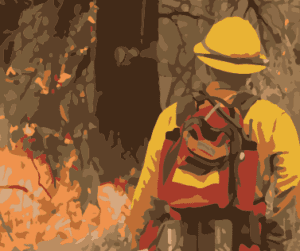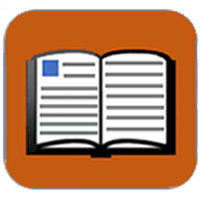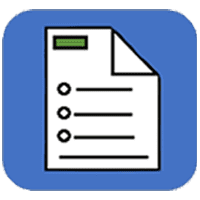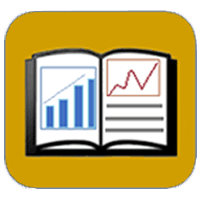Firefighter Safety
Webinar recording.
Topic: Firefighter Exposures and Efficacy of Interventions
Presenter: Paul White
Delve into the unique health exposures faced by firefighters and learn about the current state of research on the effectiveness of interventions to mitigate exposure. Paul White will share valuable insights into improving occupational safety and health outcomes for firefighters.
Webinar recording.
Topic: Resiliency and Residual in Mission Critical Roles
Join Preston Cline as he discusses the importance of protecting your mental health and building resilience when working in mission critical roles, especially during challenging situations like wildland fires.
Webinar recording.
Land management-focused panel discussion hosted by the USDA Forest Service Rocky Mountain Research Station.
Join us for a live virtual panel session with social scientists and communicators in a conversation about public perceptions and social acceptance associated with Wildfire Crisis planning and implementation. This facilitated panel discussion will be guided by your questions.
View article.
While increased length and intensity of wildfire seasons in many places have led to more concern about wildland firefighter safety, we believe ethnography has been underutilized as a method within this domain. In response, we begin building a shared idiom for ethnographic engagement with wildland firefighter safety and similar occupations. We draw on ethnographic approaches to late industrialism to develop a method called discursive risk analysis (DRA) as an initial stage in a broader collaborative and generative research practice. By collaborative, we mean cooperation among stakeholder, disciplinary, professional, and other groups. We use DRA to analyze ethnographic data and documentary sources relevant to discussions of ‘the Big Lie’ among firefighters and agency leadership. The Big Lie is a term that both firefighters and agency leaders used to suggest that wildland firefighters are being harmed by agency discourse that says firefighters will be kept safe despite the unavoidable danger of the job. It is important to the Big Lie discussion that this harm is conceptualized by firefighters as discursively driven, necessitating a research method attentive to discourse. Discursive Risk Analysis of the Big Lie discussion suggests two discursive gaps that may result in two discursive risks. The first gap, found in agency discourse, is that ‘everyone knows the job is dangerous’ but ‘zero fatalities is a reasonable goal.’ This gap is associated with a discursive risk, a possible decrease in trust among wildland firefighters in agency leadership. The second gap, observed in firefighter discourse, is that ‘the job is dangerous’ but ‘no one will get hurt today.’ This gap is associated with another discursive risk, the possibility of decreased situational awareness. Finally, we clarify each of these gaps and risks through two anthropological concepts (the Sapir–Whorf hypothesis and the public secret) that can bring new perspectives to discussions about institutional cultures of health and safety.
View article.
Initial strategies were driven by resource objectives for only six of the 32 wildfires; firefighter hazard mitigation was the primary driver of all others. No fire exhibited every characteristic of the Tamarack Fire. Analog fires accounted for a small percent (3.4%) of large (> 121 ha) USFS lightning-caused ignitions. These fires were responsible for 61.6% of structures destroyed and 25.8% of total personnel commitments of large lightning-caused USFS fires.
View factsheet.
Scientists developed a new tool to help wildland fire personel know if a safety zone is large enough to protect firefighters.
View article.
This review summarises a growing body of evidence indicating that greater use of in situ, remotely sensed, and modelled soil moisture information in fire danger rating systems could lead to better estimates of dynamic live and dead herbaceous fuel loads, more accurate live and dead fuel moisture predictions, earlier warning of wildfire danger, and better forecasts of wildfire occurrence and size. Potential uses of soil moisture information in existing wildfire danger rating systems include (1) as a supplement or replacement for drought indices, (2) for live and (3) dead fuel moisture modelling, (4) for estimating herbaceous fuel curing, and (5) for estimating fuel loads. We identify key remaining research questions and note the logistical challenge of convincing wildfire professionals of the importance of soil moisture compared with more familiar wildfire danger metrics. While obstacles remain, the path forward is clear. Soil moisture information can and should be used to improve fire danger rating systems and contribute to more effective fire management for the protection of communities and ecosystems worldwide.
View article.
Safety zones (SZs) are critical tools that can be used by wildland firefighters to avoid injury or fatality when engaging a fire. Effective SZs provide safe separation distance (SSD) from surrounding flames, ensuring that a fire’s heat cannot cause burn injury to firefighters within the SZ. Evaluating SSD on the ground can be challenging, and underestimating SSD can be fatal. We introduce a new online tool for mapping SSD based on vegetation height, terrain slope, wind speed, and burning condition: the Safe Separation Distance Evaluator (SSDE). It allows users to draw a potential SZ polygon and estimate SSD and the extent to which that SZ polygon may be suitable, given the local landscape, weather, and fire conditions. We begin by describing the algorithm that underlies SSDE. Given the importance of vegetation height for assessing SSD, we then describe an analysis that compares LANDFIRE Existing Vegetation Height and a recent Global Ecosystem Dynamics Investigation (GEDI) and Landsat 8 Operational Land Imager (OLI) satellite image-driven forest height dataset to vegetation heights derived from airborne lidar data in three areas of the Western US. This analysis revealed that both LANDFIRE and GEDI/Landsat tended to underestimate vegetation heights, which translates into an underestimation of SSD. To rectify this underestimation, we performed a bias-correction procedure that adjusted vegetation heights to more closely resemble those of the lidar data. SSDE is a tool that can provide valuable safety information to wildland fire personnel who are charged with the critical responsibility of protecting the public and landscapes from increasingly intense and frequent fires in a changing climate. However, as it is based on data that possess inherent uncertainty, it is essential that all SZ polygons evaluated using SSDE are validated on the ground prior to use.
View article.
Pre- and post-season assessments of primary (e.g. psychosocial risk factors, physical fitness and psychological capital) and secondary (e.g. work engagement, job stress and incidence of injury) outcomes facilitated comprehensive evaluation. The psychosocial education intervention program was effective at buffering participant appraisals of 12 of 13 psychosocial risk factors, namely: organizational culture, civility, psychological demands, balance, psychological support, leadership expectations, growth and development, influence, workload management, engagement, protection and safety. Participants in the psychosocial education intervention also reported lower stress relating to organizational support compared with those who not receiving the intervention program. Wildland firefighters receiving either or both intervention programs reported a significantly lower incidence rate of injury (9.9%) compared with the organisation’s 5-year average (16.0%).






